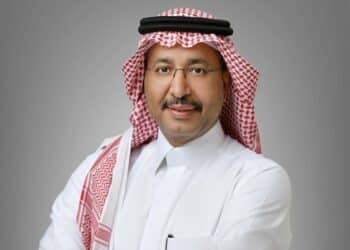With the most active hotel pipeline in the region and a captive audience of religious  and business travellers, Saudi Arabia continues to see strong growth and performance. Hotel News ME investigates the country’s tourism ambition and its diversified hotel pipeline
and business travellers, Saudi Arabia continues to see strong growth and performance. Hotel News ME investigates the country’s tourism ambition and its diversified hotel pipeline
Official figures indicate that religious tourism in Saudi Arabia will rise from 17.5 million visitors a year to potentially 30 million in 2025 and, in response, the country’s leaders are investing heavily in hospitality and travel infrastructure to cater to the new demands, as well as opening up opportunities for private sector companies – specifically hotel operators – to take a piece of the action.
The kingdom has the most active hotel pipeline in the region and new contracts are signed on a nearly weekly basis. Saudi Arabia has the most rooms under construction in the region with 28,050 rooms in 64 hotels and in Riyadh alone there are more than 43 projects totaling 10,000 rooms in the construction pipeline currently.
Capital city Riyadh and second city Jeddah, will add a combined 16,000 new hotel rooms within the next three years to meet demand in the kingdom, and more than half will be part of new 5-star hotel developments, as international hotel brands put in place ambitious expansion plans. The number of rooms in Jeddah is expected to increase by 2,700 in 2015 alone.
While luxury and upper upscale mega-developments such as the 12 tower, $35bn Abraj Kudai, which is reported to add 10,000 rooms to the country’s hotel stock by 2017, may grab headlines, it is developments in the mid-market which are adding pace to the kingdom’s growth.
At one end of the scale – the brand mix is far greater than ever before, with new concepts, as well as tried and tested international names, vying for market share. For example, international luxury cabin concept YOTEL, will debut in the country following a deal signed between IFA Hotel Investments and Capital Group International. With hotels co-located with airports in Amsterdam, London and New York, the “affordable luxury model” is expected to contribute towards plugging the gap in both the business and religious tourism landscape.
At the other end of the scale, one project combines the size of the largest luxury properties with a mid-market brand name. With a higher room stock than the world’s tallest hotel, the Marriott Marquis in Dubai, the highly anticipated Holiday Inn Makkah Abraaj Al Tayseer, with 5,154 rooms, begins phased opening in December this year with the launch of 1,642 rooms across two towers.
The entire development will comprise five towers, located 900 metres from the Grand Mosque, adding the owning operator IHG’s 25 hotel portfolio in the kingdom.
It is one of nine hotels scheduled by the operator, which also includes InterContinental Riyadh and Hotel Indigo Riyadh, which will be the Middle East’s first Indigo property.
Commenting on the activity, IHG chief operating officer for India, Middle East and Africa Pascal Gauvin, says: “Saudi Arabia is a fascinating country. It has an international and domestic market and it is very diverse.
“You go from a business city in Riyadh, which is very government led, where we have Intercontinental Riyadh as well as Holiday Inn. Then you go to Jeddah, which has tourism and business markets on the Red Sea and is developing quickly with the new airport. Then you have Mecca and Madina where growing numbers of pilgrims are visiting.”
“The business in Saudi Arabia is really diversifying as well as growing. Pilgrimage is increasing dramatically and IHG will grow as the market grows, or more if we have a greater market share than our competitors,” he adds.
Due to the rapid expansion of mid-market stock, it’s easy to forget Saudi Arabia continues to press on with a large luxury hotel pipeline in tandem with the development of mid-market hotels.
In Q2, 2014, The Rezidor Hotel Group signed four new hotel projects and opened one property, Radisson Blu Hotel Dhahran, Saudi Arabia.
Upon announcement of the new properties, Wolfgang M. Neumann, president and CEO of Rezidor, said: “Due to its fast economic growth and ambitious public spending initiatives, Saudi Arabia is a powerhouse in the Middle East. We have accelerated our development in the kingdom together with strong regional partners, and are actively seeking further growth opportunities.”
Hilton too has big plans for the kingdom, with the announcement of Hilton Al Ahsa, due to open in 2016 and an expansion of the Hilton Garden Inn brand, to cater to the mid-scale market, including the recent opening of Hilton Garden Inn Tabuk.
Rudi Jagersbacher, president, Hilton Worldwide Middle East and Africa says: “The Kingdom of Saudi Arabia is an integral part of the Hilton Worldwide portfolio and today’s announcement strengthens our commitment to the country and to one of the company’s biggest development markets.”
Starwood Hotels and Resorts Worldwide will open three new hotels in Mecca by 2016, adding 1,496 rooms; Sheraton Makkah with 532 rooms, Westin Makkah with 513 rooms and Four Points by Sheraton Makkah with 451 rooms.
Meanwhile Fairmont Hotels and Resorts International (FRHI) has also maintained a strong pipeline, following the opening of the iconic Raffles Makkah Palace and Makkah Clock Royal Tower, a Fairmont hotel, in 2010.
FRHI president Jennifer Fox says: “Jeddah was a new market for us two years ago; we have always wanted to be there and we have three great hotels in Mecca, so we have a big presence in Saudi Arabia. We want to leverage against that strength as our brands are well known in the country.” But while being in the kingdom itself is important, Fox adds that location within the country is still everything. Commenting on the opening of Fairmont Riyadh, Business Gate, she adds: “The area is home to major Fortune 500 companies and we have a hotel right in the middle of that complex; that’s also very important for us. “There is a lot more opportunity for us in Saudi Arabia. We already have a healthy pipeline and we have more announcements to make,” she adds.
The tourism strategy
Religious and business tourism create a captive market for operators in the country. But while the supply is certainly there, fluctuations in demand prove tricky to control. In order to prevent steep peaks and troughs in performance metrics, demand needs to remain near constant; however with more than 3 million people descending on the country for one week of the year it’s no easy feat. In September 2015, STR Global reported that Saudi Arabia had an average occupancy of 52.2%; with an ADR of $182 and RevPAR of $95.15. In Jeddah, ADR rose 11.5% YoY and was also one of four markets to experience double-digit RevPAR growth, up 13.1% to $188.94
While government measures such as the “Umrah plus” visa – which allows free travel to other areas of the kingdom after religious duties have been performed – helps to boost interest in coastal tourist towns and secondary cities – promotion of the country as a whole is still required. In 2014 travel and tourism contributed 2.4% of GDP, and that is forecast to rise by 6.2% in 2015 and a further 4.3% pa by 2025. In order to sustain such growth hotels and related tourism infrastructure will need to be developed across the country.
Supporting the boom in hotel developments, in June of this year, the country’s General Authority of Civil Aviation (GACA) issued a contract for $394m to Muhaidib Contracting Company for the expansion of Prince Naif Regional Airport in Al Qassim region. In the same month another contract was awarded on the $1.45bn King Khaled Airport expansion, Riyadh.
Other key projects include the Makkah metro, the expansion of Prince Mohammad bin Abdulaziz Airport in Madinah, and the development of more luxury hotels especially in the holy cities of Makkah and Madinah.
Meanwhile, direct investment in the tourism industry is worth almost SAR33.5bn to 2020, according to figures disclosed during AHIC Riyadh last year. However issues remain in the consistency of quality across different properties – specifically the local, unbranded properties compared to those which are internationally branded.
The Saudi Commission for Tourism and Antiquities (SCTA) tourism development strategy includes a number of measures to include Saudi nationals in the industry and develop small towns and coastal areas, beyond the main tourism hubs, as well as supporting small tourism businesses and entrepreneurial startups.
Strategic sub-sectors for focus include MICE, culture and heritage, sport and eco-tourism, with specific focus also to be placed on health and education tourism.
Gauvin adds: “Saudi Arabia is one of the strongest markets and it has always been a very stable market for us.
“What Saudi Arabia offers is stability. The hotel business is always a very sensitive business and safety and security is the first thing you need to have. People don’t travel to troubled places, unless it is an absolute necessity.
“We follow what the government is doing because there is a need for hotels, a need for people to travel and a need for people to find the rooms. As an international operator with great brands, we ensure we put the right brand in the right place to ensure the different guest profiles can find what they want in the city they visit,” Gauvin adds.
In 2015, Saudi Arabia’s busiest period, Hajj, was overshadowed by two tragedies – the collapse of a crane at Mecca and a stampeded, which combined claimed the lives of almost 1,000 people in a week.
Yet with stability, growth and decisive leadership to work to ensure greater safety of travellers in future, business will remain strong.



































































